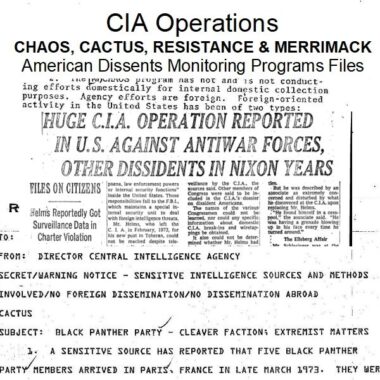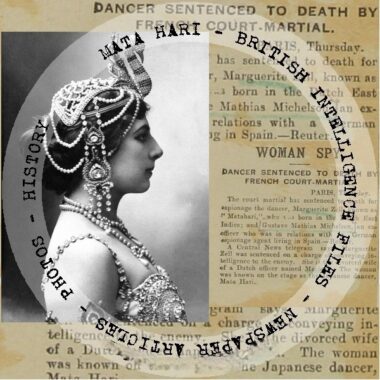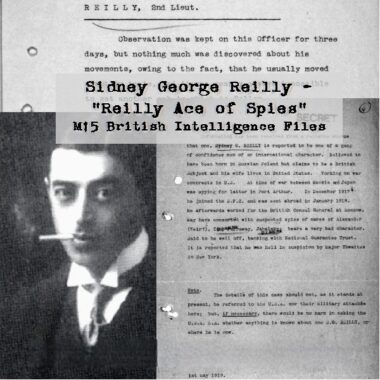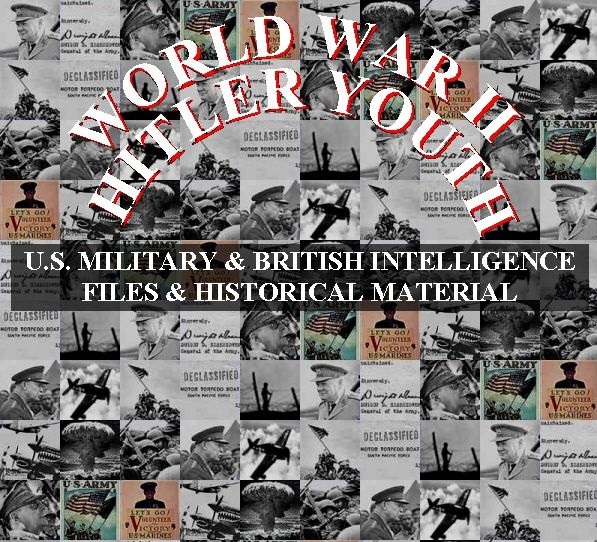Description
Hitler Youth: Formation, Activities, and Post-War Impact
Detailed Timeline of Main Events:
1922:
- March 8th: Adolf Hitler announces the establishment of the Jugendbund der NSDAP (Youth League of the Nazi Party), later known as the Jungsturm Adolf Hitler (Youth Shock Troop Adolf Hitler), in his newspaper “Völkischer Beobachter.”
1923:
- The Jugendbund der NSDAP is disbanded following the failed Beer Hall Putsch.
May 1925:
- The Wandersportverein Vogtland (Hiking Club Vogtland) in Plauen merges with the München Jugend-Bund in Munich under the new name Hitler-Jugend (HJ). This term is coined by Julius Streicher.
- Kurt Gruber of the Plauen group becomes the leader of the newly formed Hitler Youth.
- The Hitler Youth becomes a junior branch of the SA (Stormtroopers) and is directly subordinate to the SA High Command.
By 1930:
- The Hitler Youth has 900 local groups (Ortsgruppen).
- The Deutsches Jungvolk (DJ), for boys aged 10-14, and the Bund Deutscher Mädel (BDM), for girls, are founded as branches of the HJ.
By 1931:
- The total membership of the Hitler Youth expands to 15,000.
1932:
- Baldur von Schirach becomes the first Reichsjugendführer (Reich Youth Leader).
- Under von Schirach’s leadership, the HJ membership rises to 250,000.
1933:
- Adolf Hitler takes over full governmental power in Germany.
- All other youth organizations are prohibited and disbanded, with their members urged to join the Hitler Youth.
- By the end of the first year of the Nazi regime, the HJ and its branches number two million members.
1934:
- The membership of the HJ and its branches doubles to four million.
- October 1st: The Hitler Youth is declared Staatsjugend (Government-sponsored Youth Organization), with a total membership of six million.
December 1, 1936:
- The Decree of Compulsory Youth Service (Reichsjugenddienstpflicht) mandates that all German youth must join the Hitler Youth.
- The decree outlines the HJ’s mission to train youth physically, mentally, and morally for national service in the spirit of National Socialism, subordinating school and home to the interests of the State.
- The Reichsjugendführer is entrusted with all phases of the education of German youth and is responsible only to the Führer.
June 1937 – February 1938:
- MI5 British Intelligence investigates the activities of the Hitler Youth in the UK, primarily concerning bicycling tours and potential reconnaissance.
- MI5 investigates attempts by the Hitler Youth leadership to build a relationship with the British Boy Scouts.
- The German ambassador to Britain invites Boy Scout leaders, including Lord Baden-Powell, to meet with German Foreign Minister Joachim von Ribbentrop.
1940:
- Arthur Axmann replaces Baldur von Schirach as Reichsjugendführer.
- Under Axmann, the Hitler Youth’s emphasis shifts towards becoming an auxiliary force for war duties.
1943:
- The Hitler Youth is turned into a military reserve to replace manpower lost in the war.
June 1944:
- The Office of Strategic Services (OSS) publishes War Department Pamphlet No. 81-182, “The Problem of German Youth Under Military Government,” anticipating the challenges of dealing with indoctrinated German youth after the war and recommending the immediate dissolution of the Hitler Youth.
- SHAEF (Supreme Headquarters Allied Expeditionary Force) produces a detailed handbook on the Hitler Youth organization for intelligence purposes.
- The OSS develops psychological operations plans (OPERATION BACKDOOR, OPERATION PRIMROSE, and OPERATION FIDDLE) aimed at undermining the Hitler Youth and Nazi ideology among German youth and their parents.
1945:
- Boys as young as ten years old are drafted into the Hitler Youth.
- During the Battle of Berlin, Hitler Youth members form a significant part of the last line of German defense.
1945 – 1955:
- The U.S. Armed Forces implement the German Youth Activities (GYA) Program during the occupation period, aiming to interact with and re-educate German youth, establishing youth centers and sponsoring various activities.
1946-1947:
- The organizational phase of the GYA program sees the beginning of Army assistance, the creation of Army Youth Centers, and addressing personnel and logistical challenges.
1948-1951:
- The GYA program operates at its peak, financed by sources like the General Clay Fund, undertaking general activities and key projects, while still facing personnel difficulties and a reduction in U.S. Constabulary aid. Youth leadership training and democratic reorientation surveys are conducted.
1951-1955:
- The phaseout of the GYA program occurs, with attempts to transfer responsibilities to German entities, facing challenges due to reduced funding. Centers are gradually transferred, and the Joint USAREUR-HICOG Working Committee oversees the process.
Date not specified (post-WWII):
- Baldur von Schirach is a defendant in the Nuremberg Trials.
June 2003:
- A Department of Defense Military Review article, “Fighting Child Soldiers,” compares the Hitler Youth to Iraq’s Saddam Lions Club in the context of the psychological effects of engaging child soldiers in battle.
Cast of Characters and Brief Bios:
- Adolf Hitler: Leader of the Nazi Party and Führer of Germany. Announced the initial formation of the youth league and was the ultimate authority to whom the Reichsjugendführer was responsible.
- Julius Streicher: Notorious anti-semite and Nazi chieftain of Franconia. Coined the term “Hitler-Jugend.”
- Kurt Gruber: Leader of the Plauen group that merged to form the Hitler Youth in 1925. Became the initial leader of the re-established Hitler Youth.
- Baldur von Schirach: The first Reichsjugendführer (Reich Youth Leader) of the Hitler Youth (1931-1940). Oversaw the massive expansion and consolidation of the HJ as a state organization. Was a defendant in the Nuremberg Trials.
- Arthur Axmann: Replaced von Schirach as Reichsjugendführer in 1940. Shifted the focus of the Hitler Youth towards wartime auxiliary duties and military reserve functions.
- Lord Baden-Powell: Founder of the British Boy Scout movement. Was invited to meet with German officials, including Joachim von Ribbentrop, and reportedly expressed interest in meeting Hitler.
- Joachim von Ribbentrop: German Foreign Minister. Hosted meetings with British Boy Scout leaders.
- Lucius D. Clay: U.S. Army General who served as the Deputy Military Governor of the U.S. Zone in occupied Germany. The “General Clay Fund” provided financial support for the German Youth Activities program.
Hitler Youth – Hitler Jugend U.S. & British Intelligence Files & Historical Material
700 pages of U.S. and British intelligence and military files, photographs, and related material dealing with the Hitler Youth (Hitler Jugend).
The Hitler-Jugend or Hitler Youth was founded in 1922. On March 8th, 1922, Hitler, in his own newspaper, the “Volkische Beobachter”, announced the establishment of the Jugendbund der NSDAP (Youth League of the Nazi Party), later known as the Jungsturm Adolf Hitler (Youth Shock Troop Adolf Hitler). The Hitler Youth was disbanded in 1923 after the failed Beer Hall Putsch coup. It was later re-established., In May 1925 the Wandersportverein Vogtland (Hiking Club Vogtland), in Plauen, Vogtland, merged with the Munchen Jugend-Bund, in Munich Bavaria, under the new name of Hitler-Jugend, a term coined by the notorious anti-semite Julius Streichek, the Nazi chieftain of Franconia.
This new Nazi organization, culminating into the Hitler Jugend (HJ) was under the leadership of Kurt Griper, of the Plauen group. In 1925 it became a junior branch of the SA (Storm-troopers) and directly subordinate to the SA High Command. Hitler Youth members wore paramilitary uniforms patterned after those of the Nazi Party, with similar insignia to the Sturmabteilung. By 1930 the HJ had 900 Ortsgruppen (local groups) and the DJ (Deutsches Jungvolk-German Young Folk) for boys aged 10-14 and the (BDM Bund Deutscher Madel-League of German Girls) were founded as branches of the HJ. By 1931 the total membership had expanded to 15,000.
Under the leadership of Baldur von Schirach, who served as the first Reichsjugendführer (Reich Youth Leader), by 1932 its numbers had risen to 250,000. When Hitler took over full governmental power in 1933, more boys and girls joined, and all other youth organizations were prohibited and disbanded, their ranks subsequently urged to join the HJ. After the first year of the Nazi regime, the HJ, including its branches, DJ, JM, and BDM, numbered two million. One year later this figure doubled, and by the 1st. of October 1934, when the HJ was declared Staatsjuged (Government sponsored Youth Organization), the total amounted to six million.
The Decree of December 1, 1936, providing for Reichsjugenddienstpflicht (Compulsory Youth Service), completely destroyed all remaining youth organizations. The decree contained three major points: 1. All German youth shall join the HJ. 2. The mission of the HJ is to train all German Youth, physically, mentally and morally for national service in the spirit of National Socialism. School and home are subordinated to the interests of the State. 3. The Reichsjugendführer (Reich Youth Leader) is entrusted with all phases of the education of German youth and is responsible only the Fuhrer.
In 1940 Schirach was replaced by Arthur Axmann as Reichsjugendführer. As the leader of the Hitler Youth, Axman moved the group’s emphasis to that of an auxiliary force which could perform war duties. By 1943, the Hitler Youth was turned into a military reserve to replace manpower lost in the war. By 1945, boys as young as ten years old were drafted into the Hitler Youth. During the Battle of Berlin, Hitler Youth members formed a major part of the last line of German defense.
The items in this collection include:
SHAEF HANDBOOK HITLER JUGEND (HITLER YOUTH)
A 233-page, 1944 document produced by the Supreme Headquarter Allied Expeditionary Force Evaluation and Dissemination Section G-2 (Counter Intelligence Sub-Division), titled, “The Hitler Jugend (The Hitler Youth Organization),” or “Basic Handbook The Hitler Youth (Die Hitlerjugend).” This report begins with brief summaries covering of a wide range of aspects of the Hitler Youth. Subjects and topics include:
HISTORICAL BACKGROUND AND DEVELOPMENT: Die Jugendbewegung (The German Youth Movement). Beginnings of the Hitler-Jugend. Expansion of Hitler-Jugend into A State Organization. Reichsjugenddienstpflicht (Compulsory Youth Service).
ORGANIZATION: Main branches of the Hitler-Jugend. Die Reichsjugendfurng (Reich Youth Directorate). Hitler-Jugend Gebiete (Hitler-Jugend Regions). The Hitler-Jugend Standort (Garrison). Hitler-Jugend Banne (Regiments).
CONSCRIPTION AND TRAINING: Conscription Procedure. Basic Training. Weltanschauung (ideological training). Vocational Training. Schools. Gebietsfuhrerschulen (Regional Schools for Officers). Reichsschulen (National Schools). National Political Educational Institutions. The Reichsjugendakademie (National Youth Academy). Adolf-Hitler Schulen (Adolf Hitler Schools).
WAR SERVICE AND MILITARY TRAINING: War Service. Liaison with the Armed Forces. Pre- Military Training Camps. Sondereineiten (Specialist Units). Zachrichten HJ (Signals). Motor Hitler-Jugend (Motorized Hitler Youth). Marine Hitler-Jugend. Flieger Hitler-Jugend (Aviation Hitler Youth). Musikzuge (Band Platoons).
HITLER-JUGEND LEADERS, RANKS AND UNIFORMS
HITLER-JUGEND ABROAD: Hitler-Jugend in Occupied Territories. Hitler-Jugend in Foreign Territories.
OPPOSITION YOUTH MOVEMENTS: Legal Measures regarding German Youth. Unofficial youth organizations outside the Hitler Jugend. Repressive Measures.
The report contains 190 pages of detailed order of battle tables.
Included are diagrams and charts of the HJ structure, abbreviations of German terms used in HJ documents, and an outline of HJ proficiency tests, lists of names and ranks of HJ personnel.
MI5 British Intelligence Files
212 pages of MI5 British Intelligence files covering Hitler Youth activity in Britain.
Files date from June 1937 to February 1938. They cover MI5’s investigation of activities of the Hitler Jugend (HJ) in the UK in the years leading up to World War II. Mostly concerning bicycling tours by parties of the Hitler Jugend (Hitler Youth).
The MI5 recognized the threat of reconnaissance activity during these tours, though initially on the basis of an exaggerated newspaper report about ‘spyclists’.
An article appearing in a May 1937 issue of The Daily Herald ran under the headline “Nazis must be spyclists.” The story propertied that Hitler Youth participating in a bicycle tour of the England were instructed to take special note of important landmarks and geological features for use by German authorities. The M15 questioned the accuracy of the reporting but still launched an investigation.
The file contains reports generated by this investigation. Records and intercepted correspondence obtained by the MI5 shows that the leadership of the Hitler Youth were attempting to build a relationship with the British Boy Scouts. Files show the German ambassador to Britain invited top Boy Scout leaders, such as founder Lord Baden Powell, to dine with German Foreign Minister Joachim von Ribbentrop. Powell reportedly expressed interest in meeting with Nazi Leader Adolf Hitler. Files include a letter to the German Ambassador from Chief Scout Powell and the latter’s report on a meeting with Ribbentrop.
OFFICE OF STRATEGIC SERVICES FILES
A twelve-page set of OSS memos covering OPERATION BACKDOOR, OPERATION PRIMROSE, and OPERATION FIDDLE. They outline proposed psychological operations against the Hitler Youth organization.
The Backdoor Program, the purpose of this program was to increase the strength and effectiveness of opposition groups existing within Germany among young Germans.
The Primrose Program, the purpose of this program was to undermine the morale of the German younger generation, particularly with regard to willingness to participate actively in Nazi Youth activities. A secondary purpose was the encouragement of relatively unorganized gangs of rebellious youngsters in their attacks on the Hitler Youth (Hitler Jugend) and the League of German Girls (BDM).
The Fiddle Program, the purpose of this program was to arouse and accentuate opposition to the Hitler Youth (HJ) and the League of German Girls (BDM). The potential opposition was to be found among the parental generation, particularly that portion which was relatively conservative in its religious and social view.
A seven-page OSS Intelligence study titled, Japanese Attempts at Indoctrination of Youth in Occupied Areas. Shows How this other Axis Power handled indoctrination of youth.
War Department Pamphlet No. 81-182, Civil Affairs Guide, “The Problem of German Youth Under Military Government,” published in June 1944 by the Research and Analysis Branch, Office of Strategic Services. This 26-page guide covers the problems Allied forces would face when coming in contact with indoctrinated German youth.
The guide says, “In order to enforce the general directive on the elimination of the Nazi Party, it will be necessary to eliminate the Hitler Youth without delay. The process is likely to fall into two phases: First, the dissolution of the Hitler Youth, the abrogation of its statutes, and the seizure of all its property; second, the apprehension of its higher leaders and the maintenance of close watch over those leaders of the Hitler Youth who are not detained.”
THE U.S. ARMED FORCES GERMAN YOUTH ACTIVITIES PROGRAM 1945 – 1955
An 81-page, 1956 report by the Headquarters, United States Army, Europe (USAREUR). This report gives the history of interaction between the United States armed forces and the German youth, both organized and unorganized, during the 10-year occupation period following the end of World War II. The study analyzes the operation of the program in its peak years and concludes with a discussion of the phase-out and termination of the program. Among the topics discussed are the establishment of youth centers, the activities sponsored by the program, personnel and support problems, and relationships with the German communities.
Subjects and topics include:
IMMEDIATE: POSTWAR PERIOD: The Youth Problem Anticipated. Early Official Policies. The First Program. The Theater-wide Program. The Kreis Youth Committees.
THE ORGANIZATIONAL PHASE, 1946-47: The Beginning of Army Assistance. The USFET Program. German-Sponsored Groups. Youth Amnesty. Defining the Army’s Role. The Creation of Army Youth Centers. Adjusting Practice to Policy. The Civic Centers. The Personnel Problem. Logistical Support. Christmas Parties. Welfare. Preventive Medicine. Appraisal of GYA. Communist Reactions.
OPERATION, 1948-51: Financing the Program. The General Clay Fund. General Activities. The Chief GYA Projects. Personnel Difficulties. Reduction of U.S. Constabulary Aid. Youth Leadership Training. Democratic Reorientation Survey.
THE PHASEOUT, 1951-55: Plans for Transfer of GYA Responsibilities. Initial Transfer Attempts. Consequence of Reduction of Funds. Transfer of Centers. The Joint USAREUR-HICOG Working Committee.
AUDIO RECORDING EXCERPTS OF NUREMBERG TRIAL PROCEEDINGS OF DEFENDANT BALDUR SCHIRACH
Four hours of excerpts of audio recordings of the Nuremberg trial of Baldur Schirach, head of the Hitler Youth from 1931 to 1940. Recorded by the Department of Defense. European Command. Office of Military Government for Germany (U.S.). Office of the Chief of Counsel for War Crimes.
MILITARY REVIEW – FIGHTING CHILD SOLDIERS
A six-page, June 2003 Department of Defense Military Review article titled, “Fighting Child Soldiers.” The article addresses the psychological effects of U.S. soldiers having to engage child soldiers in battle. A comparison is made in this article between the Hitler Youth and Iraq’s Saddam Lions Club.
HITLER YOUTH PHOTOGRAPHS & IMAGES
Forty photos and posters of Hitler Youth marches, gatherings and other representations.









Related products
-

CIA Operation CHAOS, CACTUS, RESISTANCE & MERRIMACK
$19.50 Add to Cart -

Mata Hari: Alleged Spy for Germany British Intelligence Files
$19.50 Add to Cart -

CIA and Post WWII Intelligence Community Creation Documents
$19.50 Add to Cart -

Sidney George Reilly – “Reilly Ace of Spies” MI5 British Intelligence & Royal Air Force Files
$19.50 Add to Cart


Reviews
There are no reviews yet.